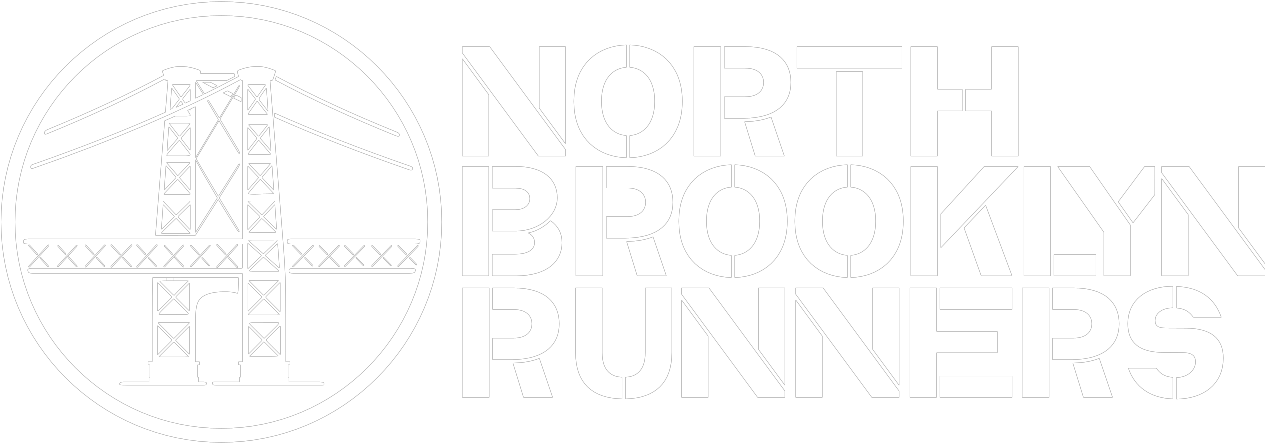Brooklyn Half Marathon Course Strategy
Last Saturday, NBR members and USATF level 1 certified coaches Angela Ortiz and Karina Christiansen led our members through a training run with tips on half marathon racing and pro tips for the Brooklyn Half course. Even if you missed the training session, you can read their great tips here!
Brooklyn Half Tips:
* Give yourself plenty of time to get to the start. You'll have to go through security, and bag check for each wave closes 50 minutes before the wave start(!). Corrals (usually) open at 6am, and corrals close 20 minutes before the wave start (as of last year).
* There are bathrooms in the corrals, so you don't have to worry about using them before you settle into the corral.
* There are water stations in between the mile markers until mile 8, at which point they appear at every mile marker.
* There is a PowerGel station at mile 8, but unless you are ok with surprises, don't try anything new unless you've been training with these.
* The stretch along Ocean Parkway is long and unshaded, so if it's sunny, some find it helpful to wear a visor or sunglasses.
* Afterwards, join us at the NBR Beach party! Details TBA.
Course Notes/Strategy:
* If you are new to running or half marathons, try to run based on effort. In the first 1-7 miles, you should be moving at an effort that feels mostly easy, saving your energy for those final miles. Ideally, you should be able to speak a full sentence and have a conversation while moving, without gasping for breath.
* If you know your pace, or are going for a PR, you should still work with a conservation mindset in the first half. Energy spent running under pace in the hills, is energy you won't have at mile 10, when you'll need it most. Once the hills are out of the way, then, depending on how you feel, it's time to shift into another gear.
* The only big hill in the course is at mile 4.5 and goes up for a little over 800m (about 70ft of elevation gain). Focus on leaning into the hill, driving your knees high, and pumping your arms. After this the course is mostly downhill!
* Use the big downhill just after mile 6 to mentally recover and reset for the last half of the race.
* Right around mile 7 there is a tiny uphill going up the on ramp to Ocean Parkway. It doesn't even register on the NYRR elevation map, but it can take the wind out of your sails if you're not expecting it!
* After mile 7, if you are moving based on effort, you can think about kicking it up a notch, if you feel it. Your effort should still feel controlled, but your breathing cadence will be quicker, and you should only be able to speak a few words at a time.
* If you know your pace, you should maintain your pace as closely as possible until mile 8, and then try to think about dipping underneath, using the energy stored from not going out too fast in the first half.
* Miles 9-12 are where you'll need to focus most. Keep your head and gaze up, shoulders down, arms pumping back and forth (not across your body), knees lifting, pushing all the way through your foot and off the toes, using your glutes to power you to the finish. Focus on someone ahead of you and reel them in. Look into the distance for the Belt Parkway overpass and the subway overpass. Once you see these you're close to the finish!
* In the last mile you'll want to kick it into your final gear. Your effort should still be controlled, but your breathing will be quick and you shouldn't be able to speak more than a word at a time. Think about finishing strong.
* The ramp leading up to the boardwalk at Coney Island is made of wood and therefore can be springy and uneven (it can also feel very long even though it's probably not more than 10-15 meters!). Be sure to lift your knees/feet.
* Once you make the right turn onto the boardwalk, give it your best effort until you cross the finish line. Look up and smile for your finish line photo! You did it!
Click here for Runners World's guide on how to pace you first half-marathon
Click here for a guide on planning your pacing mile by mile.



